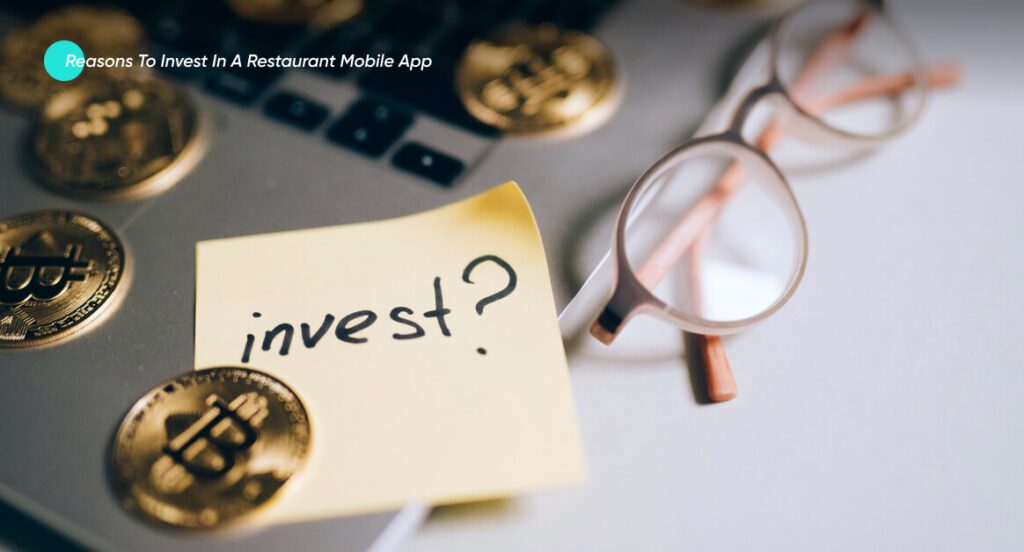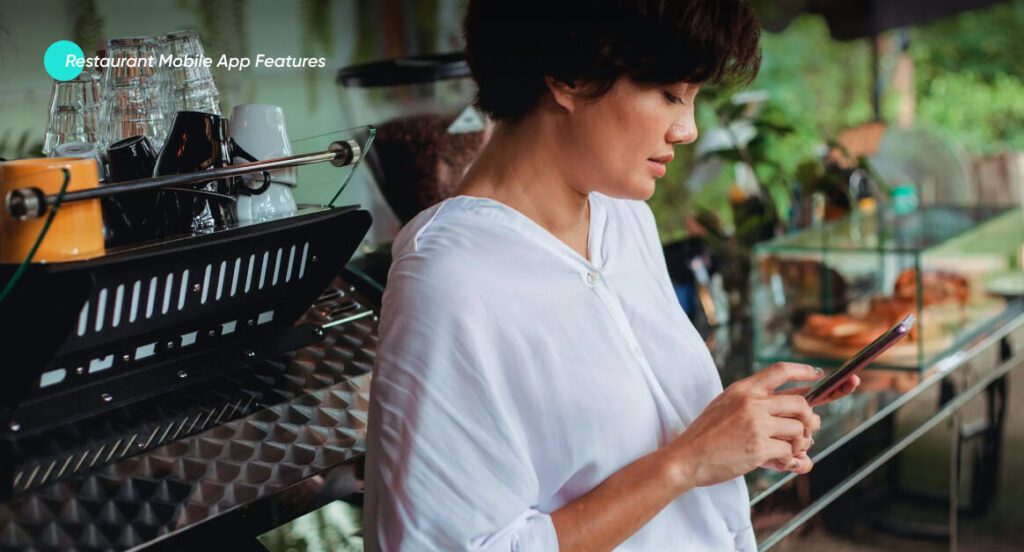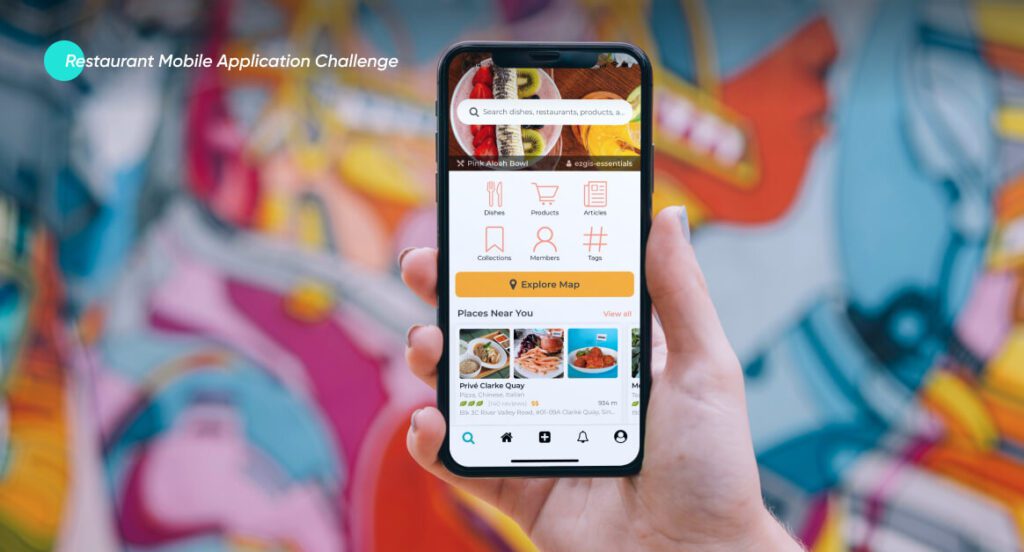17 Restaurant Mobile App Features That Get Sales
Over the last few years, restaurant mobile apps have gained considerable traction worldwide. Today, over 50 percent of restaurant customers prefer having their food delivered via a mobile app, and over 74 percent of diners say they want more restaurants to have their mobile ordering and delivery service. With a potential global market of over $1.1 trillion, this industry is set to break commerce records far and wide.
This incredible potential has led thousands of small restaurant owners to add takeaways or partner with third-party delivery services. However, most business owners have returned dissatisfied because of unfair commissions, questionable delivery quality, lack of control, and low profit margins. This has led to them losing their consumer base and valuable sales potential.
The likely solution here is to develop your own restaurant app that engages your users, reflects your brand, is under your control, and does not compromise the profitability of your business. Don’t know how to do it?
Don’t worry; we’ve got you covered! In this blog, we’ll explore all you need to know about an app, like restaurant mobile app features, benefits, processes, challenges, and costs.
What is a restaurant mobile app?
A mobile app is a digital extension of your restaurant that allows customers to place food orders, browse menus, and make reservations from their devices. It includes information on loyalty programs, coupons, and other promotional activities. It is a POS and enhances your business’s accessibility. Some restaurant apps also help guests place table reservations for dine-in. There are many different types of restaurant apps, some of them are listed below:
- Online Ordering and Delivery Apps
- Restaurant Booking App
- At-table Ordering and Payment Apps
- Apps for Restaurant Menu
- Restaurant-Locator Apps
- Loyalty and Rewards Apps
- Restaurant Rating Apps
Large restaurants invest a lot in these apps to ensure an optimized brand interaction. Smaller restaurants and local chains are also adopting this trend and investing in applications with simple restaurant mobile app features.
See our latest relevant exploration Estimating Restaurant App Development Cost ![]()
Reasons to Invest in a Restaurant Mobile App

With all that a restaurant app brings to the table, it’s a no-brainer that many businesses will invest in it to enhance their customer’s dining and delivery experiences. Here are some solid reasons why investing in mobile apps for restaurants is a great idea.

1. Improved Sales
A brick-and-mortar establishment, often, but not always, is challenging to manage. Ensuring that every customer has the perfect dining experience just isn’t possible. However, you can easily achieve a good user experience with digital orders. Instead of going from one restaurant establishment to another and standing in queues for hours, customers can order whatever they crave from their homes. Moreover, they can make reservations too.

2. Payment Processing
Convenient payment processing is the greatest incentive for both customers and restaurant owners. Integrated payment gateways help ensure ease and efficiency of payment. Without having to tend to a cash register all day, your restaurant staff can focus on more important tasks like manning food stations or catering to customer queries and complaints. Try incorporating as many payment types in your app as possible to ensure a better user experience.

3. Customer Engagement
Mobile apps for restaurants are a great touchpoint. They help you keep in touch with customers and build better relationships. It acts as a medium of communication and creates brand awareness while reinforcing your brand image. You can inform them about new menu additions and the latest news, hold contests, and boost promotional activities with app notifications.

4. Online Presence
Your restaurant’s online presence can give you an unmatched competitive edge. Customers trust businesses that have a strong online presence because it reflects their adaptability to changing trends and customer needs. Mobile apps for restaurants are great for collecting customer feedback and attending to problems and queries instantly.
Restaurant Mobile App Features

Now that we know all the reasons why you should be creating a restaurant mobile app let’s explore the features they must have. Here, we have divided these restaurant features into two elaborate sections:
Basic Features
As a restaurant owner, you should be widely familiar with inventory management, point of sales (POS), employee management, accounting and finance, reservations, payroll, and order management. Once you’re familiar with these aspects of a restaurant, incorporate these basic restaurant mobile app features into your app.
Restaurant app development extends to both the front end and the back end of the application itself, as well as back-office support. These apps are specifically designed to ensure efficient functionality for a food service.
1. Interactive Menu
Even a small-scale restaurant’s printout menus are touched by hundreds of people daily. They are more hassle than convenience for many people, and ever since the COVID-19 pandemic, they have avoided close contact with objects. E-menu is a way for businesses to address this dilemma efficiently. An app for a restaurant menu with high-quality pictures is a great way to engage customers.
When listing your food items, ensure each product falls into the right category. Moreover, smart filters can be added to help customers find what they need.
2. Online Orders
This is another great way to minimize the time consumers spend in a restaurant. Most people don’t have the time and bandwidth to sit and wait for their order or choose between many options. Hence, add some cooking suggestions, meal combos, and the like to your app to facilitate the ordering process. Ask people to define any and all allergies they have to help them eat out safely. Add an easy-to-read list of ingredients for all meals so consumers can easily review them and know what to avoid.
3. Reservations
Your consumers should be able to reserve a table via your restaurant app. They should be able to select a table, extend waiting time, edit booking information, place orders in advance, etc. This offers convenience for users and improves your brand image in the food industry.
4. Online Payment Gateways
Your restaurant mobile app must be integrated with a few online payment gateways. These can be PayPal, Apple Pay, debit-credit cards, etc. You should also include a separate check payment option to facilitate users who are splitting the bill.
5. Push Notifications
Push notifications are a great way to give customers timely reminders about updates, reservations, deliveries, and food options. They help you stay connected with clients about seasonal offers, special events, and other deals through push notifications sent to their smartphones.
6. Payment-Gateways
Food delivery is one of the few restaurant mobile app features that impacts the baseline USP for your restaurant operations. It automates how your chefs, cashiers, and drivers operate. You can add efficiency evaluation to identify the bottlenecks and eliminate them as you go. Moreover, order tracking should be added because it allows customers to track their order’s status.
7. Geolocation / Nearby Restaurants
If you have several restaurant branches across a city or country, then adding geolocation capabilities can help you manage all locations efficiently. It can also help customers locate the branch closest to them.
8. Loyalty Programs
When developing your app, offer customers bonus points. For example, if a consumer orders a signature dish that costs over $100 or frequently orders per week, offer them some points to redeem later. Offer these customers the chance to become loyal to you.
9. Customer History
Your app must have a feature that records the customer’s behavior, rating, preferences, and spending patterns. This helps you better cater to them and offer menu options that align with their previous purchases.
10. Social Media Integration
People usually share their favorite meals or restaurants with their friends or followers on different social media platforms. Hence, integrate your application with them. You can also link the loyalty program to their accounts and help them invite friends and earn bonus referral points. This offers them a difficult-to-pass incentive and provides you positive Word-of-Mouth (WOM).
11. Ratings and Reviews
People rely on ratings and reviews when exploring different food options. Ask your consumers to leave their reviews on your app so potential customers can use them as a frame of reference when potentially choosing your app. This ultimately helps other customers make more informed decisions, and you can get valuable feedback about the app and the points you can improve to provide a better user experience.
See our latest relevant exploration How much it cost to build a resturant application ![]()
Advanced Features
You can also incorporate some advanced features into your application. However, most, if not all of them, need expert insight. Hence, try working with an expert restaurant app development company[C1] .
1. Point of Sales (POS) Feature
Your app can allow consumers to place their orders via its menu. This speeds up the ordering process and improves customer satisfaction. People no longer have to wait for a waiter to take their orders; this also helps you increase operational efficiency by reducing bottlenecks.
2. Chatbots
Chatbots mimic communication with real people and offer efficient and effective solutions for existing customer queries. They use AI to provide users with an optimized user experience. However, the element of personalization can be difficult to navigate without an expert on board.
3. Taxi Ordering
Taxi ordering is one of the few restaurant mobile app features that don’t directly impact your restaurant’s functionality but have the power to set you apart in the minds of the consumers—ordering a taxi for a customer via your restaurant app to provide customers with an all-round experience. Partner with an affordable taxi service and ensure they have a few cars around your restaurant parameters.
4. Location-Based Services
You can add geo-functionality and beacons to your app to tell customers nearby about different promotions and ongoing deals. This is an upgrade to the old-fashioned way of promoting offers via flyers on the streets.
5. Gamification
Our bodies produce dopamine when we experience joy and happiness. A lot of restaurants are using interactive elements in their applications to engage users. Games, polls, quizzes, interactive quests, social activities, and other elements can create an interactive experience, especially for families with kids.
6. AR Menu and VR Dining Experiences
You can use this feature for an AR menu. It can project 3D holographic images of the dishes on a consumer’s table, helping them to visualize portion sizes and the ingredients in each dish. You can also use VR restaurant interior to transport your consumers to exotic locations to enjoy their meals.
How Do You Create a Mobile App for a Restaurant
After knowing all the potential features you can incorporate into your restaurant mobile app, you must learn how to create one. Here, we have compiled a simple guide to help you through it.
Step 1 – Conduct Thorough Market Research
The process of creating a restaurant mobile app starts with analyzing the market. Do a competitive analysis and explore the latest industry trends. Thorough market research will provide you with valuable insights into your domain and target audience. Some questions you need to ask yourself include:
- What will the potential demand and supply be?
- Will you be able to attract all the competitors’ consumers?
- What is the probability of my success?
- Will your business be profitable?
Step 2 – Develop a Business Plan
A business plan is essential when developing your restaurant application. It offers a solid foundation for the pre-development phase. When drafting the business plan, either choose a USP that truly stands out or grab ideas from popular restaurants around you. Set SMART goals and design a plan that is as close to reality as possible. Account for contingencies.
Step 3 – Choose A Reliable App Development Partner
Look for an experienced and reliable app development company. Before booking a consultation, check the company’s portfolio, website, reviews, etc. Discuss your project details with them and tell them what you expect your app to be.
Step 4 – Choose the UI/UX Design
UI/UX design is crucial for a successful restaurant app. Following the latest design trends can easily create a positive user experience to increase brand loyalty. You can create custom illustrations, mini-interactions, animations, and a visually appealing graphic interface to engage your audience and stand out from the crowd.
Step 5 – Ensure Data Safety and Protection
Security and protection of customer’s sensitive information should be your top priority. Ensure you take all the necessary steps to prevent hacking attempts, data breaches, and other cyber attacks. Consult an expert if need be.
Step 6 – Development Process
In the last section, we explored all the necessary restaurant mobile app features. Ensure that you incorporate most, if not all, of these features into your app. Talk to the expert with whom you’ve onboarded or partnered for better insight into what would work and what might lead to problems.
Step 7 – Quality Assurance Testing
Before launching your app, you need to ask an expert for QA testing. It will help you identify bugs and fixes and ensure your customers have an optimized user experience.
Step 8 – Marketing (Pre and Post-launch)
Now that the testers have approved your application for deployment and launch design a solid marketing campaign to attract the target audience. Arrange special events, promotions, and local sponsorships, and tell your customers about it in person and give them a rundown of the app when they’re dining with you.
Step 9 – Maintenance and Support
Once the app is live, it will require ongoing support and maintenance. If you don’t want your app to fail in a week or two of working, keep a close eye on its functionality. Take reviews and feedback seriously, and ask your developers to keep the app updated.
See our latest relevant exploration What are the Benefits of an E-commerce Mobile App? ![]()
Challenges of Restaurant Mobile Application Development

Restaurant businesses typically have a decent footfall (both digital and physical). Hence, they are exposed to several challenges daily. Here are a few major challenges that need to be addressed when you develop your restaurant mobile app:
1. Fluctuating Consumer Base
Recent statistics indicate that 86 percent of users quit using an application a couple of weeks after downloading it. Hence, be adaptable and adopt different marketing strategies to retain your clients.
Remember, customers usually aren’t as loyal as businesses perceive them. Their only aim is to get the tastiest meals at the lowest prices. The moment they find a restaurant that offers this value proposition, they will switch. Hence, be prepared for this possibility. Moreover, many people also like trying different food places. You can’t really control their level of loyalty.
2. Price Fluctuations
Prices fluctuate a lot in the food industry. They are difficult to stabilize and even more difficult to predict. Choosing between an offensive and defensive pricing model usually becomes harder as time passes, and keeping it updated on your app can also be difficult.
3. Market Leaders
There are many big names in the food industry right now. Market leaders take up a significant portion of their niches and offer high barriers to entry to newbies. Hence, gaining a stable flow of new customers becomes more difficult. However, having a truly optimized app backed by a strong development team will increase your chances of success.
4. Fluctuating Food Quality
Today, food quality holds the greatest importance. Food products with poor quality often lead to food poisoning and can lead to defamation. Hence, always ensure that you provide the best quality foods well within time to avoid these mishaps. Choose only your trusted delivery partners.
The meal that is served fresh on a table is never going to be the same fresh meal when served at a doorstep. Hence, work on reducing this difference and improving your response time.
How can Coding Pixel help you create your restaurant mobile app?
Coding Pixel is widely acknowledged for offering effective, unique, and efficient app solutions for multiple businesses worldwide. We have assisted many restaurant businesses in tapping the e-commerce market and expanding their business beyond their brick-and-mortar set-up. Our experts have over eight years of experience in creating popular restaurant applications with stunning UI/UX design.
We can help you build a scalable and functional resturent app for your business. See our Resutrent App Development Service </b ![]()
Frequently Asked Questions (FAQs)
You can promote your restaurant app through loyalty marketing, social media marketing, email marketing, influencer marketing, ASO, discounts, etc.
Some must-have features for restaurant mobile apps include an online ordering system, an interactive menu, reservations, push notifications, customer history, social media integration, ratings and reviews, chatbots, etc.
The cost of developing a restaurant app depends on various features, including the app’s complexity, design, and overall value proposition. However, it ranges from $10,000 to $75,000, sometimes even more.
Masifa is a Content Specialist with a bachelor’s degree in marketing and over three years of experience in content marketing and the IT industry. She is passionate about writing and talking about website and mobile app development, e-commerce, and advancements happening in the IT Industry. She creates engaging and user-centric content to optimize digital experiences for these niches. When she is not creating content, you can find her buried in a good book.